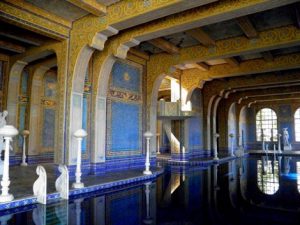
I guess it is obvious that our logo includes the Fibonacci spiral. Fibonacci was a person, an Italia mathematician in the late 11
th and 12
th century. In addition to other mathematical achievements, he is given credit for the Fibonacci Sequence. The Sequence is where each number is the sum of the two preceding numbers:
1, 1, 2, 3, 5, 8, 13, 21, 34 (and so on)
It may not seem obvious, but there is a strong connection between this sequence and artwork composition. If you look at our logo and visualize each square as a number that increases in size the same as the sequence you have the Fibonacci Spiral. (or our logo).
Another connection is what is called the Golden Ratio or the Divine Ratio. Two quantities whose ratio is the same as the sum of the total to the larger ratio. (does your head hurt?) Just think of it as the Rule of Thirds. It is a way of balancing the composition of a picture. Nicer than just centering something. These pictures come from markmitchellpaintings.com




 Each year the Fallbrook Art Center has a showing of glass. Last year I just happened to be there while it was happening and got to walk through. This is a picture from an e-newsletter I got from them showing this year’s display. This picture caught my eye. I think these are amazing. The artist name was not given but if you are interested email info@fallbrookartcenter.org.
For more info and more pictures go to http://www.fallbrookartcenter.org/. You can sign up for their newsletter there also.
Each year the Fallbrook Art Center has a showing of glass. Last year I just happened to be there while it was happening and got to walk through. This is a picture from an e-newsletter I got from them showing this year’s display. This picture caught my eye. I think these are amazing. The artist name was not given but if you are interested email info@fallbrookartcenter.org.
For more info and more pictures go to http://www.fallbrookartcenter.org/. You can sign up for their newsletter there also.


























